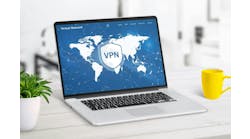“In the industrial control system world, we have known about embedded computing for years. Now it’s named IoT or IIoT, and advancements are changing the game.” Schneider’s Andrew Kling discussed the key technology enablers that are shaping the digital transformation of industry.
Technology is not an end in itself. It’s a means to value and profitability. It’s become ubiquitous. But, most of all, technology is opportunity. “We have more technology available to us today than ever has been present for humanity in the past,” said Andrew Kling, director, cybersecurity and system architecture, Schneider Electric.He explained the opportunities and drivers that are pushing digitalization in his presentation at the Foxboro User Group Conference this week in San Antonio. “How we apply that technology will matter to all of us in the end,” he said, identifying four disruptors that are having a big impact—the Open Process Automation Forum, NAMUR, Industry 4.0 and the accelerating speed of business.
The Open Process Automation Forum is a consensus-based group of end users, system integrators, suppliers, academia and standards organizations. “They’re driving a secure, open, interoperable, vendor-independent control system that is upgradable without production loss,” explained Kling. “We’ll be able to upgrade plants on the fly in the future.”
Meanwhile, NAMUR, a consortium of primarily European end-user organizations, is promoting the development of an inexpensive, vendor-independent data acquisition system that recognizes the need to potentially bypass the process control system.
The Industry 4.0 paradigm recognizes high levels of customization based on open systems, powered by dynamic business. And the speed of business continues to increase, with control decisions being made in real time. Thanks to innovations such as time-sensitive networking, connectivity and delivery can be guaranteed, despite other traffic on the network.
Digital enablers
Kling also identified what he sees as the five most important drivers of digitalization—connectivity, edge computing, the cloud, virtualization and analytics. “Connectivity is important to bring together smart devices,” he said. “Edge computing is the result of pervasive and affordable connectivity, as well as high compute capacity. “IIoT is about solving a problem where it needs to be solved and then reporting back to the system,” said Kling.
“The cloud is simply a massive aggregation of data,” he explained. “Data can be accessed by specialists in an industrial-application-developer ecosystem. But the data doesn’t have to be elsewhere. There are all sorts of reasons we might want cloud technology on premises.”
Virtualization enables the ability to have mobile solutions, and analytics are driving cognitive applications, in which artificial intelligence is optimizing performance at all levels.
Why is connectivity important? “There’s this concept of a lighter footprint,” explained Kling. “Network convergence, network virtualization, the Industrial Internet of Things (IIoT) and sensors are driving up connectivity and bandwidth needs. We’re reaching a point where we can prioritize data. These concepts add up to a lighter physical footprint, but at the same time an increase in bandwidth, supporting the demands of future applications.”
Why is edge computing important? “With more powerful processors, embedded sensing technologies, increased abilities to communicate, lower power consumption, smaller footprints and mobile applications, we can start to take an application that used to run on a server and run it where it makes the most sense,” explained Kling. “In the ICS (industrial control system) world, we have known about embedded computing for years. Now it’s named IoT or IIoT, and advancements are changing the game.”
Why is cloud computing important? “You’re able to ramp up very quickly on the CAPEX side,” he said. “Business agility, low capital expenditure, less operational issues and better use of team resources add up to a lighter physical footprint, but at the same time an open-ended range of services and significantly reduced up-front costs. You require less equipment on-site.”
Why is virtualized computing important? “We’re talking applications you don’t have to install any more,” explained Kling. “It’s already set up on a virtual machine. Network convergence, network virtualization, IoT and sensors mean a lighter physical footprint and an increase in bandwidth supporting demands of future applications. You can take advantage of these resources on-premise or off-premise.”
Why are analytics important? “The world is catching up to analytics with computing power,” said Kling, who recalled a time, after finishing his master’s degree, when the promise of artificial intelligence was unfeasible because of limited computing power. “But analytics applied to data lakes—pools of large amounts of data—will enable solutions we haven’t even imagined.”
“Digitalization enables customers to effectively manage their key challenges, which include profit optimization; decreasing technology cycle time; the “great crew change” (to the next generation of workers); safety of people, assets and environment; cybersecurity; and breaking down information silos,” said Kling. The digital architecture enables optimized engineering for lower cost schedules and lower risk in capital project engineering; efficient operations through monitoring and control to ensure safety and performance; reliable assets that can be tuned to behave as desired; and an empowered workforce.
The editors of Control, Control Design and Smart Industry were on site at the 2018 Foxboro User Group conference to bring you breaking news, innovations and insights from the event. Now that the event is over, the editors have put together an event report featuring the top news. Get your copy today.






